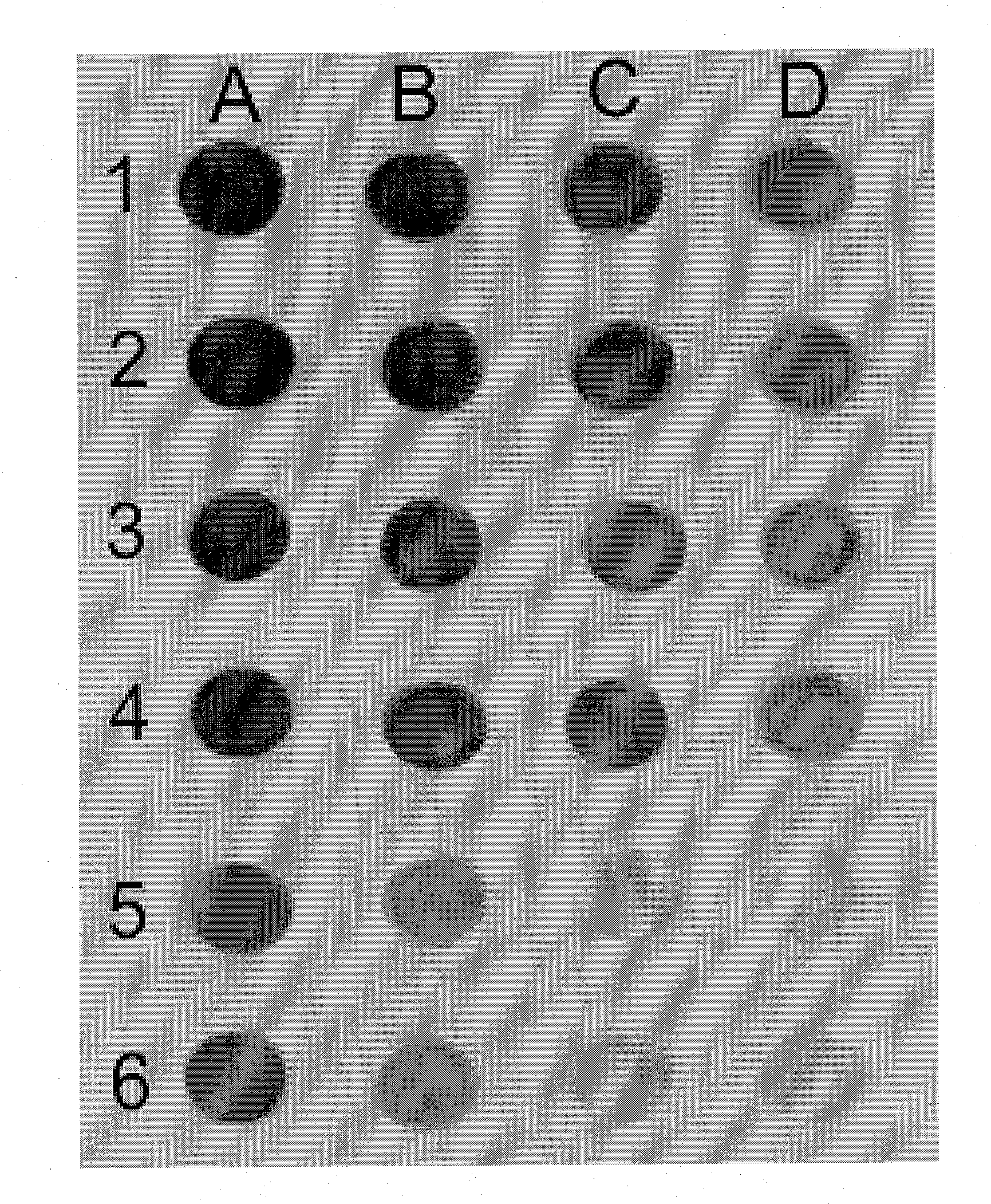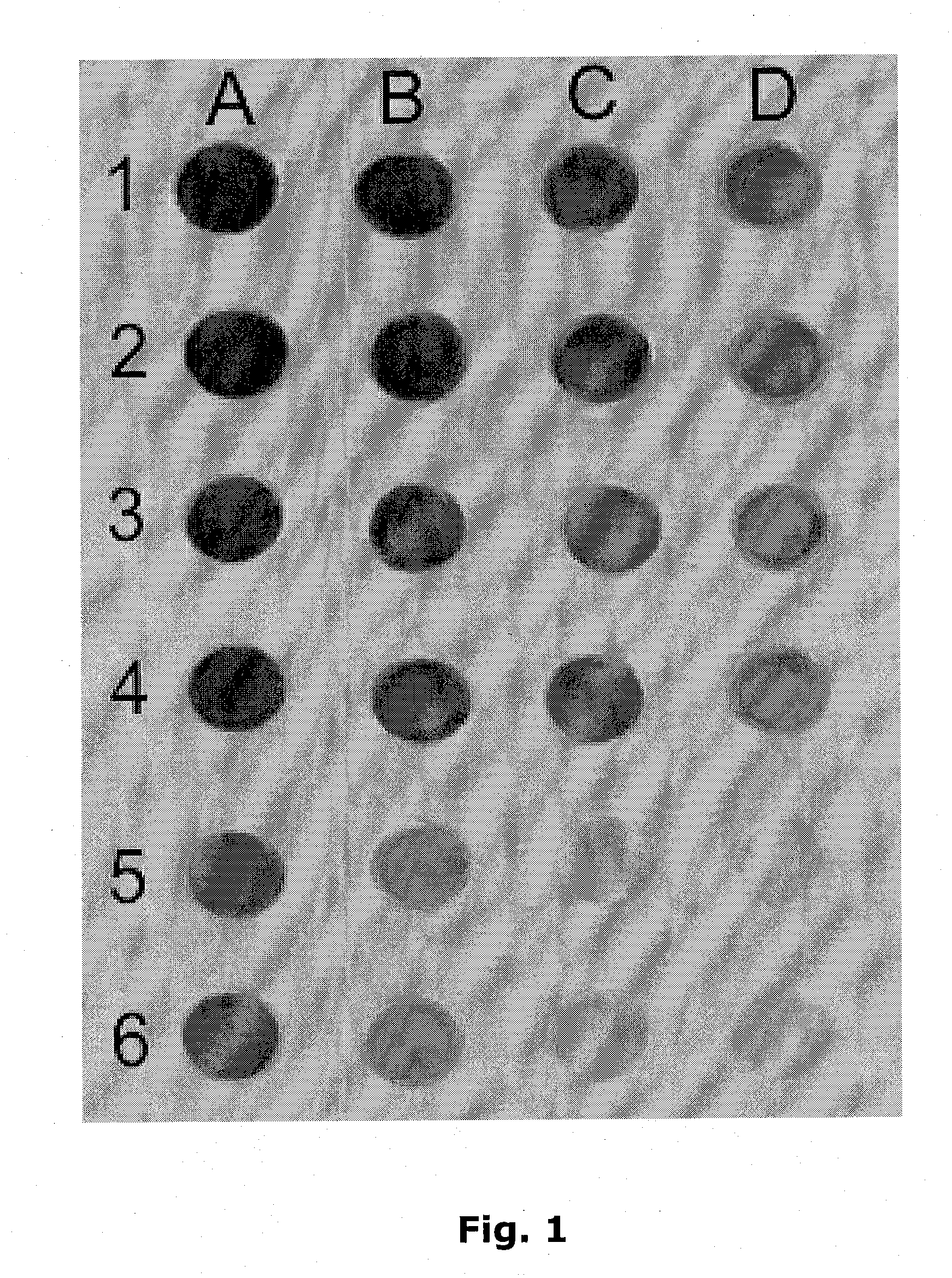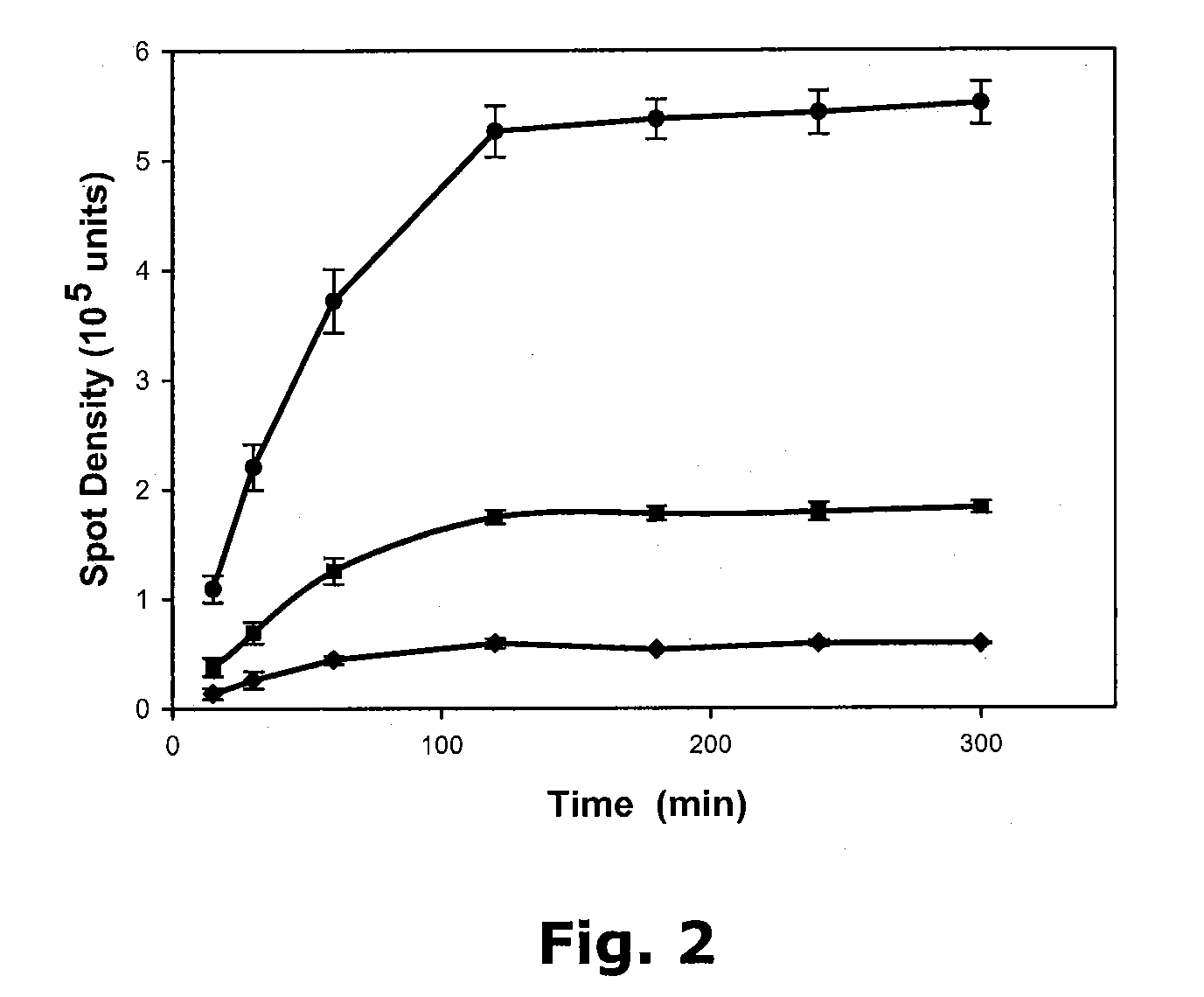Colloidal Gold Single Reagent Quantitative Protein Assay
- Summary
- Abstract
- Description
- Claims
- Application Information
AI Technical Summary
Benefits of technology
Problems solved by technology
Method used
Image
Examples
example 1
Reacients Used
[0042]Colloidal gold suspension was obtained from Bio-Rad Laboratories (Hercules, GA). The nitrocellulose paper (NCP) was Protran BA 45 (0.45 μm pore size), a product of Schleicher and Schuell (Keene, N.H.), and SDS was ultraPure 100% stock solution from Gibco (Grand Island, N.Y.). Bovine serum albumin (BSA), bovine erythrocyte carbonic anhydrase, egg white lysozyme and soybean trypsin inhibitor (SBTI) were all products of Sigma-Aldrich (St. Louis, Mo.). The Micro BCA Protein Assay kit was obtained from Pierce (Rockford, Ill.). The IntenSE BL Silver Enhancement Kit was obtained from GE healthcare.
example 2
Gold Spot Assay
[0043]Protein samples (20 μl) were adjusted to 0.1% SDS, and heated at 80° C. for 10 min. Serial dilutions were made with 0.1% SDS such that 2 μl aliquots contained 1.5-1500 ng of protein. In addition to unknown samples, a standard curve was constructed using bovine serum albumin (BSA). All samples were spotted in duplicate on the same sheet of nitrocellulose.
[0044]A template for guiding even rows and columns with approximately 1 cm spacing was obtained by using the flat plastic detachable 1000 μl pipette tip holder tray support from the“Space Saver” rack series (Rainin). To deposit the samples, the nitrocellulose sheet was placed on absorbent tissue paper, the template was positioned over the nitrocellulose, and was secured to the bench top with pieces of tape. Aliquots of protein sample (2 μl) were applied onto the nitrocellulose, as guided by the template, into a rectangular grid. This ordered array at 1 cm intervals provides for ample distance between dots for acc...
example 3
[0046]Some of the data presented here was obtained using a Molecular Dynamics Personal Densitometer, and the stained spots quantified using Molecular Dynamics ImageQuant software (available from GE Healthcare). Data was also collected using an Epson Perfection 1660 PHOTO scanner, and the images were analyzed using UN-SCAN-IT-gel software (Silk Scientific, Orem Utah). While the more expensive laser densitometer was advantageous for digitizing dots at the higher end of stain density, it was observed to be too powerful for some of the lighter staining dots. The use of the Epson scanner revealed a more sensitive range for the assay, extending it down to the range of 1.5-100 ng. The measured spot intensities were transferred to Quattro Pro (Corel) or Excel (Microsoft) for statistical analysis. Graphs were prepared using SigmaPlot (Systat Software Inc.)
PUM
 Login to view more
Login to view more Abstract
Description
Claims
Application Information
 Login to view more
Login to view more - R&D Engineer
- R&D Manager
- IP Professional
- Industry Leading Data Capabilities
- Powerful AI technology
- Patent DNA Extraction
Browse by: Latest US Patents, China's latest patents, Technical Efficacy Thesaurus, Application Domain, Technology Topic.
© 2024 PatSnap. All rights reserved.Legal|Privacy policy|Modern Slavery Act Transparency Statement|Sitemap



